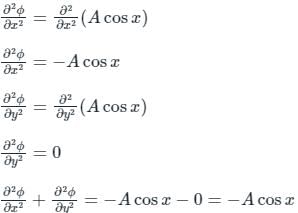Civil Engineering (CE) Exam > Civil Engineering (CE) Tests > Test: Potential Function - Civil Engineering (CE) MCQ
Test: Potential Function - Civil Engineering (CE) MCQ
Test Description
10 Questions MCQ Test - Test: Potential Function
Test: Potential Function for Civil Engineering (CE) 2025 is part of Civil Engineering (CE) preparation. The Test: Potential Function questions and answers have been prepared
according to the Civil Engineering (CE) exam syllabus.The Test: Potential Function MCQs are made for Civil Engineering (CE) 2025 Exam.
Find important definitions, questions, notes, meanings, examples, exercises, MCQs and online tests for Test: Potential Function below.
Solutions of Test: Potential Function questions in English are available as part of our course for Civil Engineering (CE) & Test: Potential Function solutions in
Hindi for Civil Engineering (CE) course.
Download more important topics, notes, lectures and mock test series for Civil Engineering (CE) Exam by signing up for free. Attempt Test: Potential Function | 10 questions in 30 minutes | Mock test for Civil Engineering (CE) preparation | Free important questions MCQ to study for Civil Engineering (CE) Exam | Download free PDF with solutions
Detailed Solution for Test: Potential Function - Question 1
Test: Potential Function - Question 2
Verify whether the following functions are valid potential functions.
(i) ϕ = A(X2 − Y2)
(ii) ϕ = Acos x
(i) ϕ = A(X2 − Y2)
(ii) ϕ = Acos x
Detailed Solution for Test: Potential Function - Question 2
Test: Potential Function - Question 3
The velocity potential function in a two-dimensional flow field is given by ϕ = x2 – y2
The magnitude of velocity at point P (1, 1) is
The magnitude of velocity at point P (1, 1) is
Detailed Solution for Test: Potential Function - Question 3
Detailed Solution for Test: Potential Function - Question 4
Test: Potential Function - Question 5
If the fluid velocity for a potential flow is given by V(x, y) = u(x, y)i + v(x, y)ĵ with usual notations, then the slope of the potential line at (x,y) is
Detailed Solution for Test: Potential Function - Question 5
Test: Potential Function - Question 6
The line where the velocity potential is constant is called as______.
Detailed Solution for Test: Potential Function - Question 6
Detailed Solution for Test: Potential Function - Question 7
Test: Potential Function - Question 8
Which of the following functions are valid velocity potential functions(ϕ)?
Detailed Solution for Test: Potential Function - Question 8
Detailed Solution for Test: Potential Function - Question 9
Test: Potential Function - Question 10
If the velocity potential function ϕ =5 (x2 – y2), the velocity components at the points (4, 5) will be
Detailed Solution for Test: Potential Function - Question 10
Information about Test: Potential Function Page
In this test you can find the Exam questions for Test: Potential Function solved & explained in the simplest way possible.
Besides giving Questions and answers for Test: Potential Function, EduRev gives you an ample number of Online tests for practice
Download as PDF

























